
Florida redbelly turtle (Pseudemys nelsoni), Everglades National Park. |
Florida, part 21: Turtles (continued)
The two turtle species most commonly seen by visitors to southern Florida are Florida redbelly and peninsular cooter. Large specimens are particularly easy to see as they bask along the canals and lakeshores.
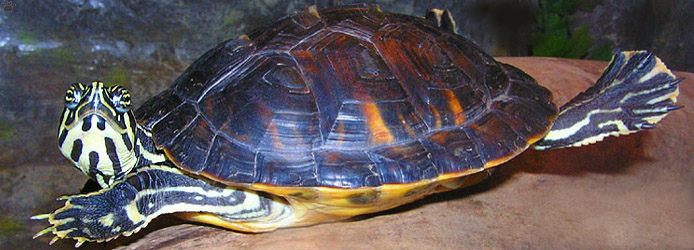
Florida redbelly turtle, ENP. |
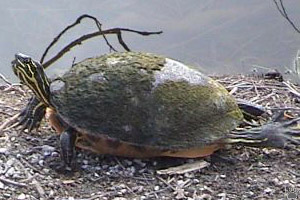
Peninsula cooter (P. floridana peninsularis), ENP. |
Older ones become difficult to identify as their field marks disappear. They also hybridize sometimes. |
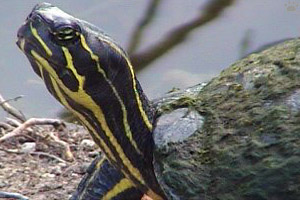
Peninsula cooter, ENP. |
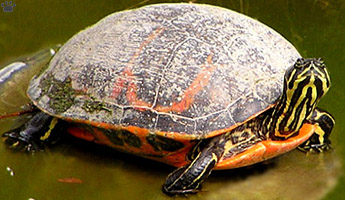
Florida redbelly turtle, ENP. |

Peninsula cooter at its nest, ENP. |

Shell of a young Peninsula cooter, Ocala National Forest. |
Musk turtles are also very common, but they bask less often. When they do, they can climb slanted trees in search of sunny spots. Sometimes they live in small sinkholes. |
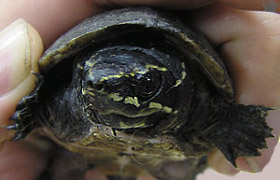
Common musk turtle (Sternotherus odoratus), ENP. |
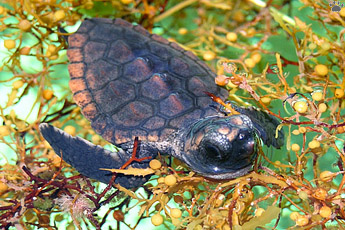 |
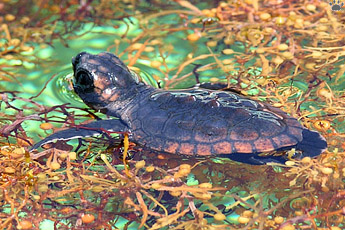 |
| Baby loggerhead (Caretta caretta) resting in sargassum, off Virginia Key. |

Young loggerhead, off Key Largo. |
Five species of sea turtles occur in Florida waters. The most common nesting one is the loggerhead. |

Adult loggerhead, Dry Tortugas National Park. |
 |
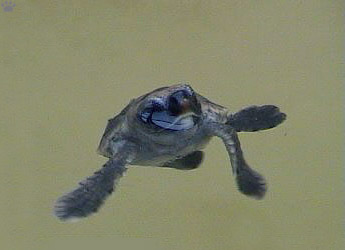 |
| Baby loggerheads rescued during Hurricane Wilma, Virginia Key. |
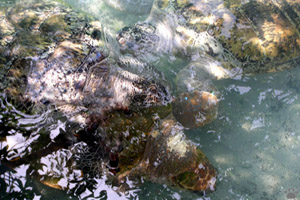
Loggerheads engaged in group sex, Key West National Wildlife Refuge. |
Beach development and plastic pollution are gradually reducing sea turtle numbers. |
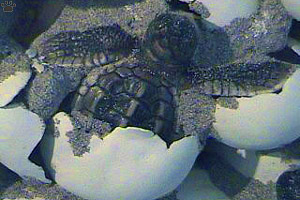
Hatching loggerheads, Cape Canaveral National Seashore. |
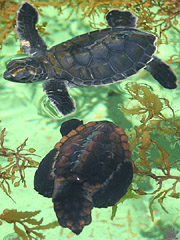 |
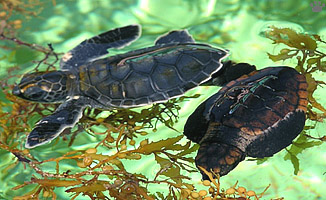 |
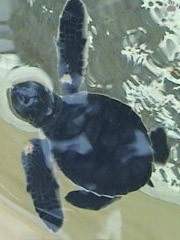 |
| Baby green sea turtle (Chelonia mydas, on top and on the right photo) and loggerhead, off Virginia Key. |
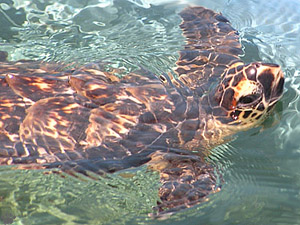
Atlantic hawksbill (Eretmochelys imbricata imbricata), off Miami. |
Green, hawksbill and leatherback turtles also nest of Florida coasts, mostly on the Atlantic side. |
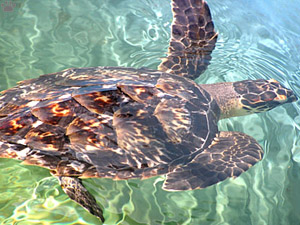
Atlantic hawksbill, off Miami. |
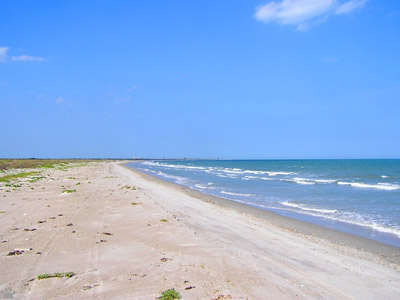
Sea turtle nesting beach, Kennedy Space Center. |
Part 22. Amphibians
Back to Part 20
Home
|